Treatment with IFB-088 Improves Neuropathy in CMT1A and CMT1B Mice
- PMID: 35501630
- PMCID: PMC9167212
- DOI: 10.1007/s12035-022-02838-y
Treatment with IFB-088 Improves Neuropathy in CMT1A and CMT1B Mice
Abstract
Charcot-Marie-Tooth disease type 1A (CMT1A), caused by duplication of the peripheral myelin protein 22 (PMP22) gene, and CMT1B, caused by mutations in myelin protein zero (MPZ) gene, are the two most common forms of demyelinating CMT (CMT1), and no treatments are available for either. Prior studies of the MpzSer63del mouse model of CMT1B have demonstrated that protein misfolding, endoplasmic reticulum (ER) retention and activation of the unfolded protein response (UPR) contributed to the neuropathy. Heterozygous patients with an arginine to cysteine mutation in MPZ (MPZR98C) develop a severe infantile form of CMT1B which is modelled by MpzR98C/ + mice that also show ER stress and an activated UPR. C3-PMP22 mice are considered to effectively model CMT1A. Altered proteostasis, ER stress and activation of the UPR have been demonstrated in mice carrying Pmp22 mutations. To determine whether enabling the ER stress/UPR and readjusting protein homeostasis would effectively treat these models of CMT1B and CMT1A, we administered Sephin1/IFB-088/icerguestat, a UPR modulator which showed efficacy in the MpzS63del model of CMT1B, to heterozygous MpzR98C and C3-PMP22 mice. Mice were analysed by behavioural, neurophysiological, morphological and biochemical measures. Both MpzR98C/ + and C3-PMP22 mice improved in motor function and neurophysiology. Myelination, as demonstrated by g-ratios and myelin thickness, improved in CMT1B and CMT1A mice and markers of UPR activation returned towards wild-type values. Taken together, our results demonstrate the capability of IFB-088 to treat a second mouse model of CMT1B and a mouse model of CMT1A, the most common form of CMT. Given the recent benefits of IFB-088 treatment in amyotrophic lateral sclerosis and multiple sclerosis animal models, these data demonstrate its potential in managing UPR and ER stress for multiple mutations in CMT1 as well as in other neurodegenerative diseases. (Left panel) the accumulation of overexpressed PMP22 or misfolded mutant P0 in the Schwann cell endoplasmic reticulum (ER) leads to overwhelming of the degradative capacity, activation of ER-stress mechanisms, and myelination impairment. (Right panel) by prolonging eIF2α phosphorylation, IFB-088 reduces the amount of newly synthesized proteins entering the ER, allowing the protein quality control systems to better cope with the unfolded/misfolded protein and allowing myelination to progress.
Keywords: Charcot-Marie-Tooth; IFB-088/Sephin1/icerguestat; Neuropathy; Proteostasis; UPR.
© 2022. The Author(s).
Conflict of interest statement
P.G., P.M. and C.T. are full-time employees and stockholders of InFlectis BioScience. M.D. acts as a Scientific Advisory Board member and Consultant for InFlectis BioScience.
Figures
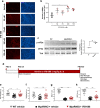
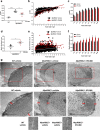

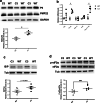
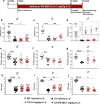

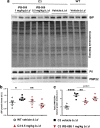
Similar articles
-
Activation of XBP1s attenuates disease severity in models of proteotoxic Charcot-Marie-Tooth type 1B.Brain. 2025 Jun 3;148(6):1978-1993. doi: 10.1093/brain/awae407. Brain. 2025. PMID: 39979221 Free PMC article.
-
Phosphorylation of eIF2α Promotes Schwann Cell Differentiation and Myelination in CMT1B Mice with Activated UPR.J Neurosci. 2020 Oct 14;40(42):8174-8187. doi: 10.1523/JNEUROSCI.0957-20.2020. Epub 2020 Sep 24. J Neurosci. 2020. PMID: 32973043 Free PMC article.
-
Ablation of Perk in Schwann Cells Improves Myelination in the S63del Charcot-Marie-Tooth 1B Mouse.J Neurosci. 2016 Nov 2;36(44):11350-11361. doi: 10.1523/JNEUROSCI.1637-16.2016. J Neurosci. 2016. PMID: 27807175 Free PMC article.
-
Charcot-Marie-Tooth disease and related inherited neuropathies.Medicine (Baltimore). 1996 Sep;75(5):233-50. doi: 10.1097/00005792-199609000-00001. Medicine (Baltimore). 1996. PMID: 8862346 Review.
-
Regulation of myelin-specific gene expression. Relevance to CMT1.Ann N Y Acad Sci. 1999 Sep 14;883:91-108. Ann N Y Acad Sci. 1999. PMID: 10586235 Review.
Cited by
-
Disrupting the transmembrane domain interface between PMP22 and MPZ causes peripheral neuropathy.iScience. 2024 Sep 19;27(11):110989. doi: 10.1016/j.isci.2024.110989. eCollection 2024 Nov 15. iScience. 2024. PMID: 39759075 Free PMC article.
-
The small compound Icerguastat reduces muscle defects in oculopharyngeal muscular dystrophy through the PERK pathway of the unfolded protein response.Open Biol. 2023 Apr;13(4):230008. doi: 10.1098/rsob.230008. Epub 2023 Apr 12. Open Biol. 2023. PMID: 37042114 Free PMC article.
-
Charcot-Marie-Tooth disease type 1E: Clinical Natural History and Molecular Impact of PMP22 Variants.medRxiv [Preprint]. 2025 May 2:2025.05.01.25326605. doi: 10.1101/2025.05.01.25326605. medRxiv. 2025. Update in: Brain. 2025 Jun 09:awaf219. doi: 10.1093/brain/awaf219. PMID: 40343019 Free PMC article. Updated. Preprint.
-
The role of ATP citrate lyase in myelin formation and maintenance.Glia. 2025 Jan;73(1):105-121. doi: 10.1002/glia.24620. Epub 2024 Sep 25. Glia. 2025. PMID: 39318247 Free PMC article.
-
Activation of XBP1s attenuates disease severity in models of proteotoxic Charcot-Marie-Tooth type 1B.bioRxiv [Preprint]. 2024 Feb 2:2024.01.31.577760. doi: 10.1101/2024.01.31.577760. bioRxiv. 2024. Update in: Brain. 2025 Jun 3;148(6):1978-1993. doi: 10.1093/brain/awae407. PMID: 38352425 Free PMC article. Updated. Preprint.
References
-
- Fridman V, Bundy B, Reilly MM, Pareyson D, Bacon C, Burns J, Day J, Feely S, et al. CMT subtypes and disease burden in patients enrolled in the Inherited Neuropathies Consortium natural history study: a cross-sectional analysis. J Neurol Neurosurg Psychiatry. 2015;86:873–878. doi: 10.1136/jnnp-2014-308826. - DOI - PMC - PubMed
MeSH terms
Substances
LinkOut - more resources
Full Text Sources
Other Literature Sources
Medical
Molecular Biology Databases
Miscellaneous

